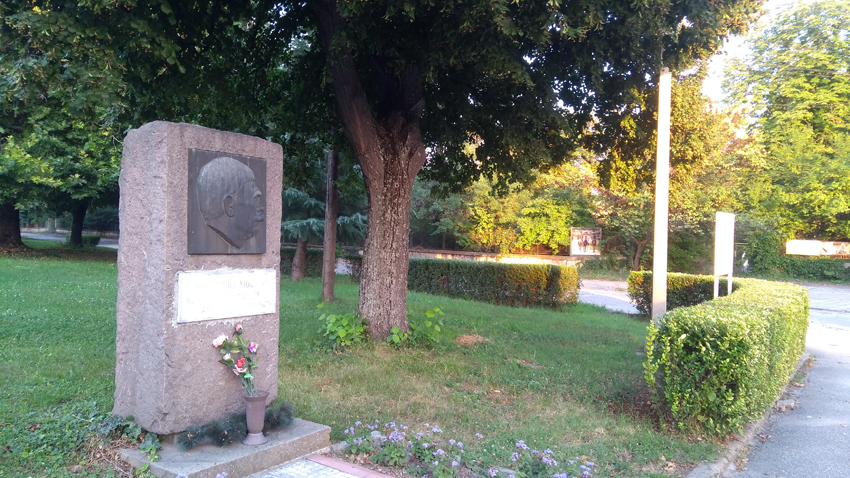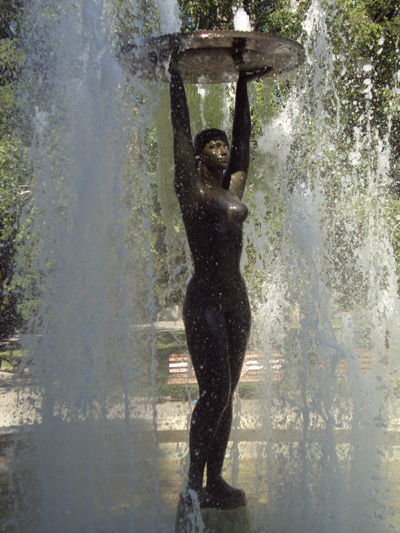The August sun hung low over the ridges of mount Sredna Gora. It illuminated the old-world walls with its crimson rays, lending them a fanciful colour, air and effect.
That is how the patriarch of Bulgarian literature Ivan Vazov saw Hisarya more than 130 years ago. According to local historian Atanas Kunchev, Vazov loved to stroll at sunset through the resort town in the foothills of Sredna Gora Mountain, and to take in the view opening up from the southern fortress wall.

Ivan Vazov seems to have been able to look ahead, into the future, when, in 1897 he wrote: I think that these mineral waters of Hisarya have a grand future. They are a godsend for this blessed land… What we, humans should now do, is regulate well, and make use of this national wealth.
And indeed, in 1882, the government issued regulations for the exploitation of the baths of Hisarya, and in Plovdiv, Czech chemist Sosterzonek made the first analysis of the mineral water in Bulgaria, taking samples from five Hisarya springs. That marked the start of organized balneotherapy in Bulgaria.
A century later, in 1993, archaeologists unearthed a monumental spa complex revealing the history of the settlement around the mineral springs. As far back as the time of the Odrysian kingdom, sanctuaries combining therapy and religion (nympheums) were built. When the Romans conquered the kingdom in 46 AD, the small settlement was incorporated into the diocese of Thrace. The mineral springs were beginning to attract the dignitaries of the empire, and by the mid-2nd century, the construction of a thermal complex had begun.

Emperor Diocletian, who suffered from a kidney disease, sought a cure in these warm mineral waters. In 293 AD the settlement took his name, to become the third biggest town in the province of Thrace, after Philipopolis and Augusta Trayana. A complex was built, with a residence, an amphitheatre, thermae, army barracks, a sepulchre and an imposing fortress wall with 44 turrets and 4 big gates.

In our day only the southern and the main, western gate, have been preserved; the latter goes by the name of the Camels, as it resembles two camels facing one another. After the collapse of the Western Roman Empire, Diocletianopolis survived for a time as a major Christian centre. Then, as the Ottoman invasion progressed, after fierce resistance, a large part of the population was massacred and the settlement was destroyed.

 Notably, the mineral water used in the pools the Romans built still circulates,to this very day, along the water pipeline and sewerage system built by the Romans. The 4th century Roman thermae, which now fall inside Momina Sulza park (Lilly of the valley), covering an area of 3,000 sq. meters, were discovered back in the 1930s. They are believed to be among the few known Roman baths in Europe, which are, in places, preserved almost up to the roof. Under a European project for the development of cultural and historical attractions on the territory of Hisarya municipality, the thermae have been conserved and partially restored. To popularize tourism in the region, the municipality plans to create conditions so that visitors to the complex may be able to bathe in the mineral water flowing in the Roman pools.
Notably, the mineral water used in the pools the Romans built still circulates,to this very day, along the water pipeline and sewerage system built by the Romans. The 4th century Roman thermae, which now fall inside Momina Sulza park (Lilly of the valley), covering an area of 3,000 sq. meters, were discovered back in the 1930s. They are believed to be among the few known Roman baths in Europe, which are, in places, preserved almost up to the roof. Under a European project for the development of cultural and historical attractions on the territory of Hisarya municipality, the thermae have been conserved and partially restored. To popularize tourism in the region, the municipality plans to create conditions so that visitors to the complex may be able to bathe in the mineral water flowing in the Roman pools.
The walkway lying south of Momina Sulza leads to a 4th century Roman tomb. The stairwell is several metres long and leads to the entrance of the burial chamber, decorated with frescoes and colourful floor mosaics. Archaeologists say it is the only Roman tomb discovered in Bulgaria with a floor mosaic in pristine condition.
Extensive parks and well-designed hiking and ecotrails in the town’s environs offer travellers a spectacular view to the town and to the Thracian Plain, but also to the mountains Rila, Sredna Gora and the Rhodopes.
One of the landmarks in the town is Villa Petrovich –a vacation house for writers – which has kept the spirit of renowned Bulgarian authors alive, authors such as Yordan Yovkov and Dora Gabe, for example.
English version: Milena Daynova
Photos: Darina Grigorova, BGNES and bg.wikipedia.orgFrom the beginning of December to April 15, the Pirin resort of Bansko was visited by over 190,000 tourists from the country, from neighbouring Balkan countries, from Europe and the USA . The number of overnight stays during the season was over..
The first thing anyone notices upon arrival in Garvan village are the beautiful and well maintained Dobrudzha-style houses. The village lies at the heart of Dobrudzha, the “granary of Bulgaria”, not far from the town of Silistra, and has a population..
The largest specialized exhibition for camping tourism, water sports and outdoor leisure is returning for the seventh time in a row and at a new location - Sofia Land. To host the event, the former capital amusement park opens its..

+359 2 9336 661
